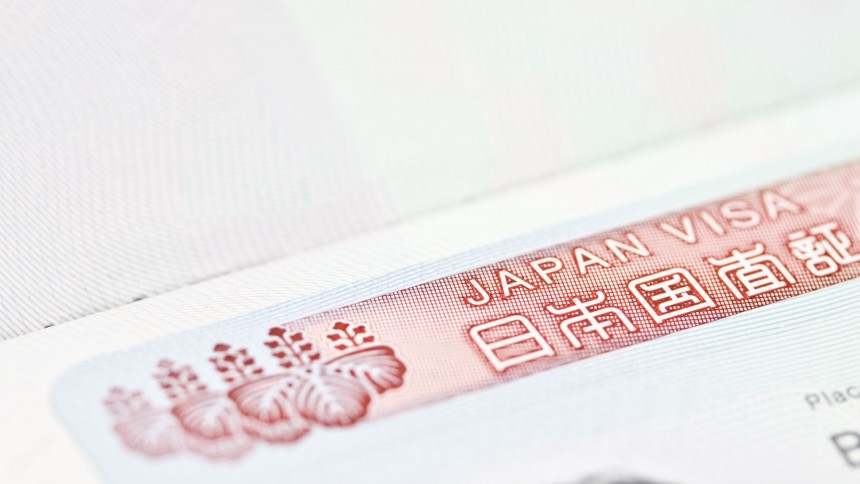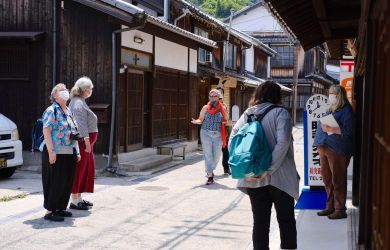
“I feel a little sad, but the aquarium is 88 years old and it’s time for retirement.”
—Naohiko Saijo, president of the company that operates Marinepia Matsushima Suizokan in Miyagi, on the closing of the facility—the second oldest aquarium in Japan
WHATEVER FLOATS YOUR BOAT
- About 100 people flocked to a shrine in southwest Chiba to watch a battle between funchi jumping spiders.
- A kangaroo that’s taken to sleeping with a pillow at a zoo in Kobe is reportedly “melting visitors’ hearts.”
- The first airfield in Japan devoted solely to testing drones opened last month in Tsukuba, Ibaraki.
- Meanwhile, 22 of 47 prefectures have instituted a ban on drones, or are considering one.
WHO KNEW?
- Researchers at the Japan Atherosclerosis Society say food intake doesn’t have a big impact on cholesterol levels.
- The announcement comes as the health ministry is revising its dietary guidelines for the first time in five years.
- It was reported that some experts believe the declining birthrate is due, in part, to a “lack of basic knowledge among Japanese about pregnancy and childbirth.”
- A survey by Kobe Gakuin University suggests that nearly a quarter of workers at foster homes have “suffered physical or mental damage” at the hands of the kids they supervise.
BY THE NUMBERS
- Officials at the fisheries ministry say Europe now has about 5,500 Japanese restaurants, up from 2,000 in 2006.
- Japanese embassies and consulates issued 2,873,755 visas last year, a jump of 54.1 percent from 2013—and the most ever.
- Which means it’s unsurprising to learn that foreigners made up 12.4 percent of all visitors to Tokyo SkyTree in fiscal 2014, compared to 6.8 percent the year before.
- Authorities at the foreign affairs ministry are bemoaning the fact that, although Japan provides a full 10 percent of the UN’s annual budget, just 2.5 percent of high-ranking officials are Japanese.
FUN & GAMES
- Authorities involved in planning the 2020 Tokyo Olympics say they hope to develop robots that can help visitors take pictures and provide sightseeing tips.
- Meanwhile, the government has established a ¥10 billion fund to “improve the training environment for athletes” at the Paralympics.
- Officials in municipalities near Mt. Fuji announced plans to stock 3,100 helmets in cottages and other facilities for climbers to use in case of emergency.
- Sentence of the Week: “A former member of a coalition of local farmers protesting against the construction and expansion of Narita airport in Chiba Prefecture has decided to sell a plot of land on the airport’s premises to the operator, it’s been learned.” (via Mainichi Japan)
AND FINALLY…
- Cleanup efforts in the Tama River are paying off. Officials say ayu sweetfish, which thrived in the river during the time of the Tokugawa Shogunate, are returning in great numbers.
- Now officials are faced with a new problem: how to let the fish swim upstream without being blocked by all the intake weirs that dot the course.
- Commenting on proposed changes to Japan’s security legislation, Prime Minister Shinzo Abe declared it would be “difficult” for the SDF to provide the U.S. with support during a preemptive strike against North Korea.
- Authorities at the National Police Agency say they busted 122 foreigners for carrying bogus residence cards last year.
STATS
20,300
Minimum number of elevators in the Tokyo area that went into shutdown mode during last month’s 8.1 magnitude earthquake
2,200
Residents of Naniwa-ku, Osaka, who were forced to evacuate their homes after construction workers uncovered a 1-ton bomb from WWII
9,271
Number of Japanese people studying for a junior high education in night schools across the country
Compiled from reports by AP, Japan Today, The Japan Times, Jiji, The Tokyo Reporter, The Mainichi, The Japan News, AFP, Reuters and Kyodo





